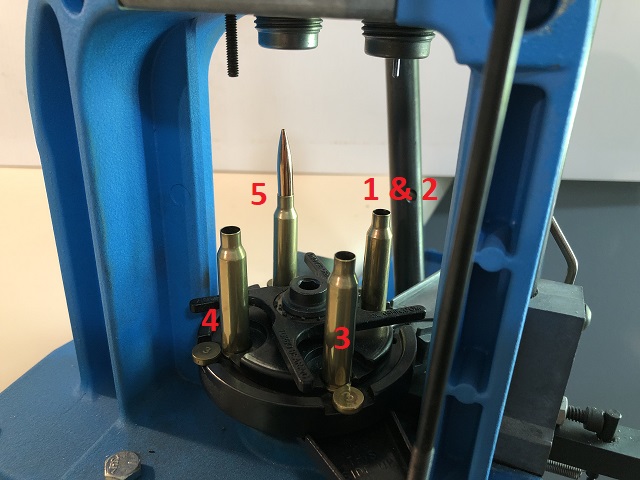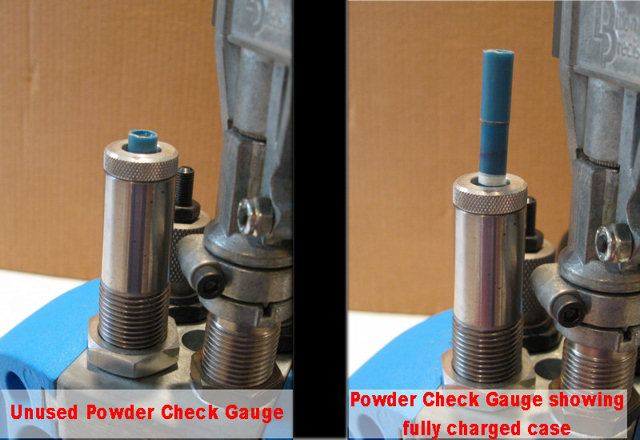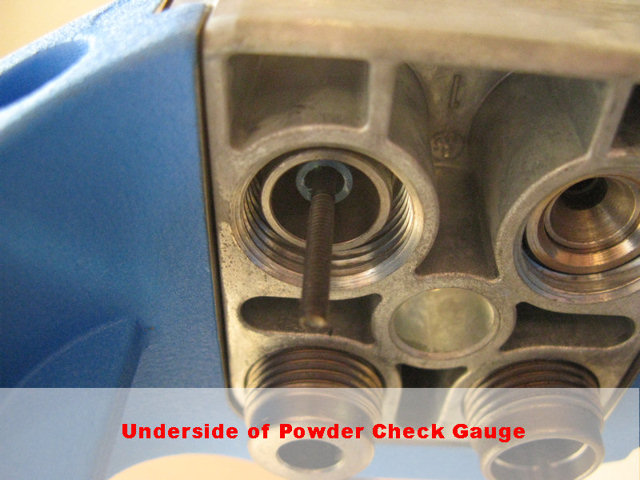My Service Rifle Reloading Process
Everyone has a different method of reloading. Here is mine.
When I acquire brass it is brand new, never fired.The only preparation that I do is to trim to minimum length. I don't uniform primer pockets, ream flash holes, or do anything else to the brass.Once it's trimmed, it's loaded on a Dillon 550 for the first time and fired in a match. |
|
After each firing, the brass follows the same procedure.Brass brought home from the range is tumbled in corn cob media to remove dirt. |
|
I use a household strainer and bucket to separate the brass from the tumbling media. |
|
Using a plastic bin I dump in a layer of cases and spray with lube. With a lid on top, the bin is shaken to get the lube on all the cases. Another layer of brass is added and the bin is shaken once more. |
|
Cases are resized on a single-stage press. The die is an RCBS X-Die. |
|
I set up my sizing die by using a gauge that mimics the chamber in my rifle. When I put a fully sized case in the gauge the length from end of the gauge to head of the case should be 2.000". |
|
The brass is tumbled in corn cob again to remove case lube. |
|
To load primers into the Dillon 550 I use these tubes to pick up primers. |
|
 |
These are actually multiple steps performed all at once on a Dillon 550b progressive press.1: When the ram goes up, the case goes into a decapping die to remove any tumbling media inside the flash hole.2: When the ram comes down a primer is pressed into the primer pocket.3: The powder measure drops powder into case.4: A custom made Powder Check Gauge indicates that there is a full charge of powder in each case.5: The bullet is seated. |
 |
I check the amount of powder in each case with a homemade gauge made from an old die, the body of a ball point pen, and a cap screw.Normally the gauge is sitting down inside the body of the die (left side of photo). Clear tape wrapped around the pen is used to keep the shaft of the pen from falling through the die.As the ram is elevated the charged case rises on the shell plate. The tip (cap screw) of the gauge enters the mouth of the case. If there is a full charge of powder, the gauge (ball point pen body) follows the upward movement of the ram and rises high enough so I can see the white line (right side of photo).Keep in mind that I am just checking to make sure I have something close to a full charge of powder in the case. The gauge is not accurate enough to tell me if the charge is only slightly off. |
 |
|
The final result is a bin full of loaded ammunition.The same procedure is used to load ammunition for all yard lines. |
For those curious about the loads that I use for competition, here they are:
-
Brass: I start with brand new commercial brass, either Remington or Winchester. This is loaded a maximum of 5 times.
-
Primer: Remington 7 1/2
-
Powder: 24.0 grains of Reloader-15 for all loads.
-
Bullet: For 200 and 300 yards, Sierra 77 grain Match King. For 600 yards, Berger 80.5 grain.
Since I find reloading to be a chore rather than enjoyment, I want to keep the procedure short while not sacrificing quality. So there are a number things that I do (or rather don't do) to keep the process efficient. Other shooters may feel that I am not loading optimum ammo but I believe that it is good enough for my level of skill.
-
Bullets for 600 yards are seated to only one length at all times regardless of barrel life.
-
I prime, charge, and seat on a Dillon 550b press.
-
All components are used without any thought towards lots or sorting. Bullets are taken straight from the box and seated into the case.
-
Powder is thrown directly into the case using the Dillon powder measure.
-
No brass prep other than initial trimming.
-
The procedure for 600 yard ammo is no different than for 200 and 300 yards.